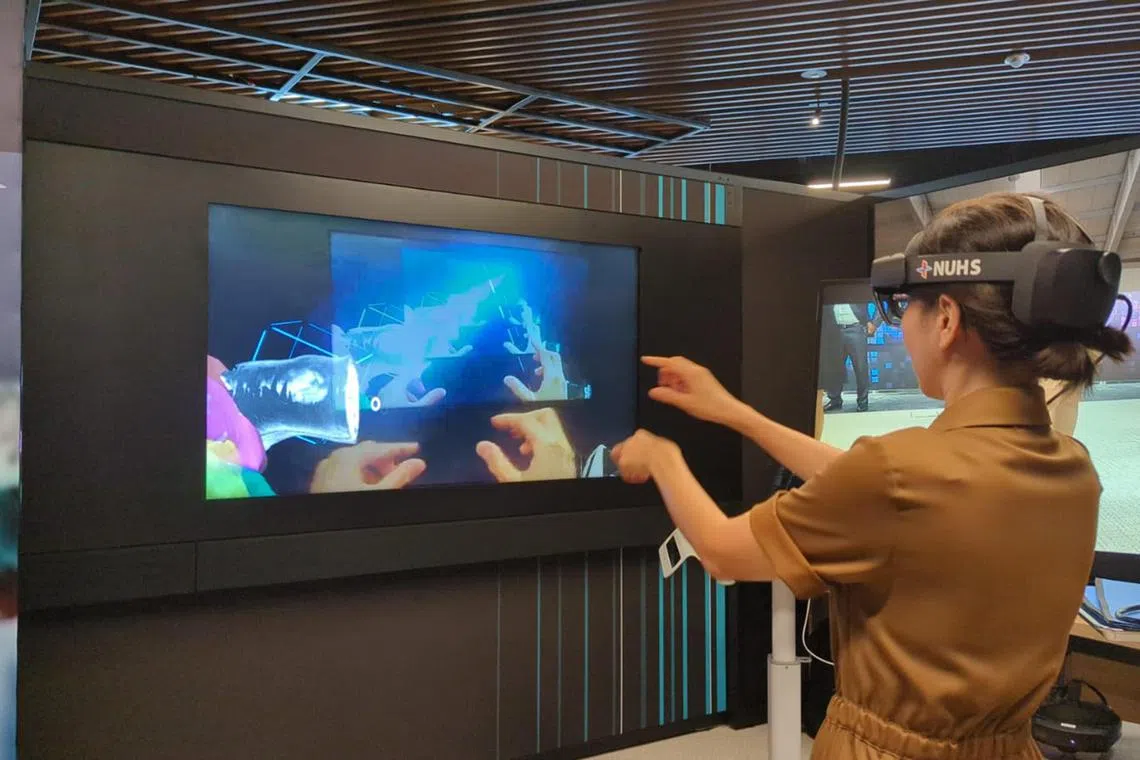For subscribers
Iron Man and Pokemon Go hold clues to the next leap in the Internet
Augmented reality, or AR, has legs, unlike the hollow-eyed avatars in the current cartoon-like worlds of the metaverse
Sign up now: Get ST's newsletters delivered to your inbox

NUH surgeons have used the 5G-connected HoloLens 2 to assist with more than 50 heart, brain, spinal cord and liver surgeries to date.
PHOTO: MICROSOFT
Follow topic:
I pinched my index finger and thumb, rotated my hand and stretched my arms apart in the air to manipulate the 3D hologram of a liver projected on a special pair of tinted glasses. So, this is what surgery is like.
My glimpse into the world of surgeons came via augmented reality (AR) lenses. The rather heavy see-through glasses were mounted on an adjustable headband on my head. Not quite Marvel superhero Tony Stark’s omnipresent artificial-intelligence (AI) assistant Jarvis, which projects 3D holograms. But this pair of Microsoft HoloLens 2 I tried on two weeks ago is starting to transform the way people work.


